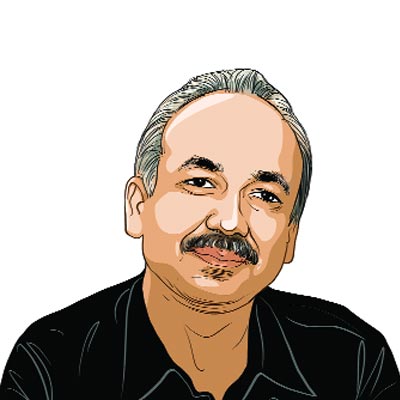Opinion Red flag on words
How divisions within the Maoists are playing out in the media.
No one better understood the strength of propaganda and tactics for short-term gain in politics than the Unified Communist Party of Nepal-Maoists (UCPN-M). The Maoists,when they joined the peace process and gave up their ten year-long insurgency,were the centre of peoples hopes for a stable,peaceful,democratic and prosperous Nepal.
The Maoists cashed in on that perception,but did little to earn it. It took much longer for the Nepali media including the big privately-owned outlets to tell the revolutionary emperors that they had no clothes on.
That was not without reason. The Maoists and the bulk of the media struggled together against the then kings 2005 coup. But this marriage continued,even as it slowly became evident that Maoist leaders could be as corrupt and dishonest as bourgeois leaders,and that the hopes for change and the consolidation of democracy were not on the Maoists real agenda. Realisation dawned that the Maoists outreach to the media was not proof of their love for the freedom of expression,but only tactical: using useful idiots towards their ultimate political goal of setting up a totalitarian regime,a goal which they never compromised.
During this period,the party sought to control media houses by expanding their trade-union base. Also,they set up their own media print,radio and television run and funded by the party or powerful leaders. Today,the Maoists have power,as the dominant partner in government,and with a clear radical-left agenda. But they dont generate the hope they did earlier.
Prachandas leadership has become visibly weaker,with two senior vice-chairmen Mohan Baidhya Kiran and Baburam Bhattarai clearly challenging him on every front. Prachanda no longer controls the partys muscles and money exclusively,as he did in the past,when those two supported him,or at least did not challenge him in public. But as someone who knows the utility of the media,Prachanda immediately suspended the partys regular financial support to two powerful official organs the daily Janadisha and the weekly Janadesh as they had supported Baidhya and Bhattarai in the party feud.
Janadisha has died quietly,while Janadesh is on the verge of it. Other publications and periodicals,about five dozen in number,are waiting for a similar fate,while control of ABC Television and Mirmire FM could trigger further war among the top three leaders. But the pro-Prachanda group believes that he alone has the power to coerce the media,through his supporter Shaligram Jammarkattel who controls media trade unions,as well as the crushing industries that ruthlessly exploit nature for construction and development,funneling huge sums to the partys channel.
Divisions within the Maoists are inevitable. So,for Prachanda,control over the government he can always have unpalatable party ministers dismissed using his clout over Prime Minister Jhalanath Khanal is important,but the real challenge lies in controlling the money- and muscle-based party organs,like the trade unions and the military wing. Baidhya succeeded in having his loyalist,Netra Bikram Chand Biplab,appointed head of the newly-formed public security bureau that will control the Young Communist League or YCL. But YCL chief Sagar has asked Prachanda to review the formation of the bureau,something that the Maoist chief may not find too easy to undo.
Prachanda,the hero of the 2006 movement,is now fighting to save his clout in the party. The only other leader in this category,a hero both in and outside Nepal for his role during the 2006 movement,died at the age of 85 last year. On March 21,on G.P. Koiralas first death anniversary,enraged people stopped an official function to have a public park named after him,and his statue installed there in recognition of the contribution he made in making Nepal a democratic republic.
Prachanda cornered inside the party,and GP detested even posthumously? This is not a spur-of-the-moment reaction; this is a message,revealing the extent of the peoples frustration.
yubaraj.ghimire@expressindia.com





